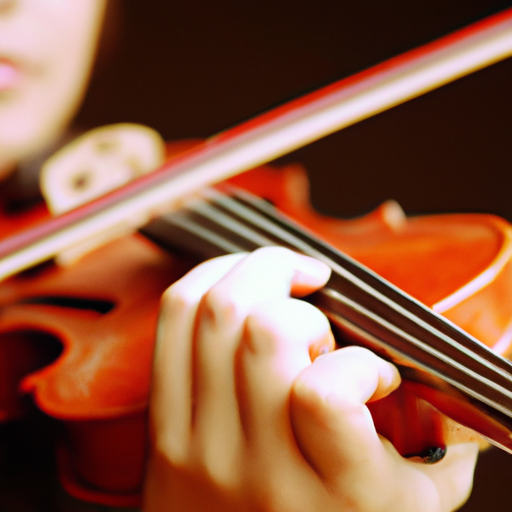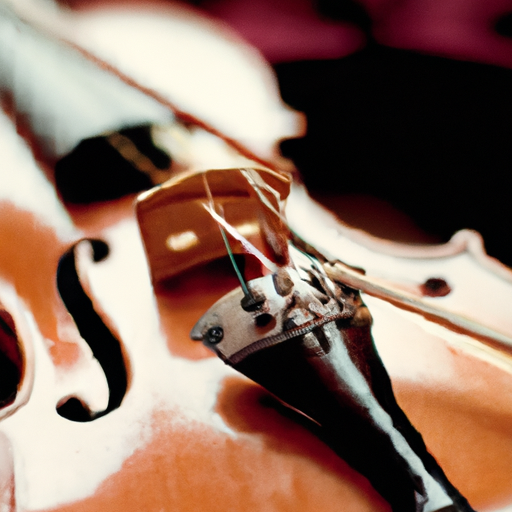
Learning to play the violin can be a rewarding and fulfilling journey. Whether you have always been drawn to its beautiful sound or simply want to explore a new musical instrument, the violin offers a unique and expressive experience. In this beginner's guide, we will take you through the various aspects of playing the violin, from its history to holding the instrument and bow, tuning, reading sheet music, and more. Let's dive in!

The violin is often considered one of the most captivating and versatile instruments. Learning to play the violin can enhance your musical abilities, boost your cognitive skills, improve coordination, and provide a creative outlet for self-expression. Moreover, the violin is a prominent instrument in various genres of music, including classical, jazz, folk, and even contemporary styles. Mastering the violin opens doors to endless musical possibilities.

The violin's roots can be traced back to the early 16th century in Italy. It evolved from various stringed instruments and was further developed by renowned violin makers, such as Antonio Stradivari and Guarneri del Gesù. Over the centuries, the violin became a prominent instrument in orchestras and chamber music ensembles, showcasing its expressive capabilities and technical demands. Today, it continues to be a beloved instrument cherished by musicians and audiences worldwide.
When starting your violin journey, you have the option to rent or buy an instrument. Renting a violin is a cost-effective choice for beginners as it allows you to explore the instrument without a significant financial commitment. Additionally, rental companies often provide maintenance services. However, if you're committed to learning the violin long-term, buying a violin can be a worthwhile investment. It gives you the freedom to choose an instrument that suits your preferences and can potentially appreciate in value over time.
There are several types of violins available, each catering to different playing styles and skill levels. Student violins are crafted for beginners and are typically made of lower-cost materials. Intermediate violins offer better sound quality and craftsmanship, making them suitable for advancing players. Professional violins are handcrafted with high-quality materials and superior craftsmanship, providing exceptional sound and responsiveness. When choosing a violin, consider your skill level, budget, and long-term goals.
Violins come in different sizes to accommodate players of various ages and body types. The standard violin size is 4/4 or full size, suitable for adults and older teenagers. For younger players, fractional sizes such as 3/4, 1/2, 1/4, 1/8, 1/10, and 1/16 are available. To determine the appropriate size, measure the player's arm length from the neck to the middle of the left-hand palm. Consult with a violin specialist or teacher to ensure you choose the correct size for comfortable and efficient playing.
The violin consists of several essential parts, including the body, neck, fingerboard, bridge, soundpost, tailpiece, and strings. The body is typically made of spruce or maple wood and houses the sound-producing components. The neck and fingerboard provide support and allow the player to press down on the strings to produce different pitches. The bridge supports the strings and transmits sound vibrations to the body. The soundpost enhances the violin's resonance, and the tailpiece holds the strings and fine tuners.
Violin strings are available in various materials and tensions, each contributing to the instrument's tone and playability. Steel-core strings provide a bright and focused sound, making them suitable for beginners. Synthetic-core strings offer a warmer and more complex sound, while gut-core strings produce a rich and traditional tone. The string tension affects the instrument's responsiveness and playability. Experimenting with different string types and tensions can help you find the perfect combination for your desired sound.
Developing the correct posture is crucial for comfortable and efficient violin playing. Stand or sit up straight, keeping your shoulders relaxed. Hold the violin with your chin resting on the chinrest and your left hand supporting the neck. Your right arm should be relaxed and slightly bent, holding the bow with a gentle grip. Maintaining proper posture prevents tension and allows for better control and flexibility while playing.
The left hand position on the violin neck is essential for accurate intonation and finger placement. Keep your fingers rounded and close to the strings, pressing down with the fingertips. The thumb should be opposite the second finger, providing stability and balance. The right hand position on the bow requires a relaxed grip between the thumb and fingers. Experiment with different bow holds to find one that feels comfortable and allows for smooth bowing.
Bowing techniques are crucial for producing a beautiful and expressive sound on the violin. The bow should move parallel to the bridge, maintaining consistent contact with the strings. Experiment with different bowing techniques, such as legato (smooth and connected), staccato (short and detached), and spiccato (bouncing bow), to add variety and dynamics to your playing. Consistent practice and guidance from a teacher can help you master these techniques.
Tuning the violin ensures that each string is at the correct pitch, allowing for accurate and harmonious playing. The standard tuning for the violin is G-D-A-E, from lowest to highest string. The pegs located at the top of the scroll are used for coarse tuning, while the fine tuners located on the tailpiece provide finer adjustments. It is essential to develop an ear for pitch and learn to distinguish when the strings are in tune.
Here are some tips to help you tune your violin effectively:
Reading sheet music is an essential skill for any violinist. Familiarize yourself with the staff, notes, and musical symbols. Learn to identify the different note durations, such as whole notes, half notes, quarter notes, and eighth notes. Practice reading simple melodies and gradually progress to more complex pieces. Regular practice and exposure to different musical compositions will enhance your reading skills.
Sheet music for the violin comes in various forms, ranging from beginner to advanced levels. Method books, such as Suzuki or Essential Elements, provide a structured approach to learning the violin. Classical repertoire often requires sheet music with specific fingerings, bowings, and dynamics. Lead sheets and fake books are common in jazz and popular music genres, providing chord symbols and melodies for improvisation. Explore different genres and styles to broaden your musical versatility.
Understanding basic music theory concepts will greatly benefit your violin playing. Learn about scales, key signatures, intervals, and chords. This knowledge enables you to analyze music, transpose melodies, and improvise. Additionally, studying music theory enhances your overall musicianship and makes learning new pieces more efficient and enjoyable.
Playing scales and finger exercises is an integral part of violin practice. Scales help develop finger dexterity, intonation, and familiarity with different key signatures. Start with the major scales, such as G, D, A, and E, and gradually expand to minor scales and arpeggios. Finger exercises, such as trills and double stops, improve finger strength and coordination. Regularly incorporating these exercises into your practice routine will yield noticeable progress in your technique.
Mastering bowing techniques is essential for producing a wide range of expressive sounds on the violin. Experiment with different bow strokes, such as legato, staccato, martelé, and sautillé. Practice bowing exercises to develop control, speed, and dynamic control. Additionally, learn various bowing styles, such as détaché, spiccato, and col legno, to expand your musical repertoire and versatility.
Choosing the right beginner song is crucial for building confidence and motivation. Look for simple melodies with a limited range and straightforward rhythm. Popular beginner songs for the violin include "Twinkle, Twinkle, Little Star," "Mary Had a Little Lamb," and "Ode to Joy." These songs provide an excellent foundation for learning basic techniques, such as bowing, fingering, and shifting.
Here are some tips to make your practice sessions more effective:
Hiring a violin teacher can greatly accelerate your learning process and ensure proper technique and progress. A teacher provides personalized guidance, corrects mistakes, and introduces new concepts and repertoire. They also offer motivation, accountability, and valuable feedback. An experienced teacher can help you overcome challenges and tailor the learning experience to your specific needs and goals.
When searching for a violin teacher, consider the following factors:
In this beginner's guide to playing the violin, we covered various aspects of learning the instrument. We explored the reasons why learning to play the violin is beneficial, delved into its rich history, and discussed important factors when choosing a violin. We also examined the different parts of the violin and their functions, along with proper posture and bowing techniques. Tuning, reading sheet music, basic techniques, and finding a teacher were also covered.
Learning to play the violin is a journey that requires dedication, patience, and consistent practice. Embrace the challenges, celebrate your progress, and stay committed to improving your skills. Remember to enjoy the process and let your passion for music guide you. Whether you aspire to be a professional violinist or simply want to play for pleasure, the violin offers a lifetime of musical fulfillment. Keep practicing, and the rewards will be endless.